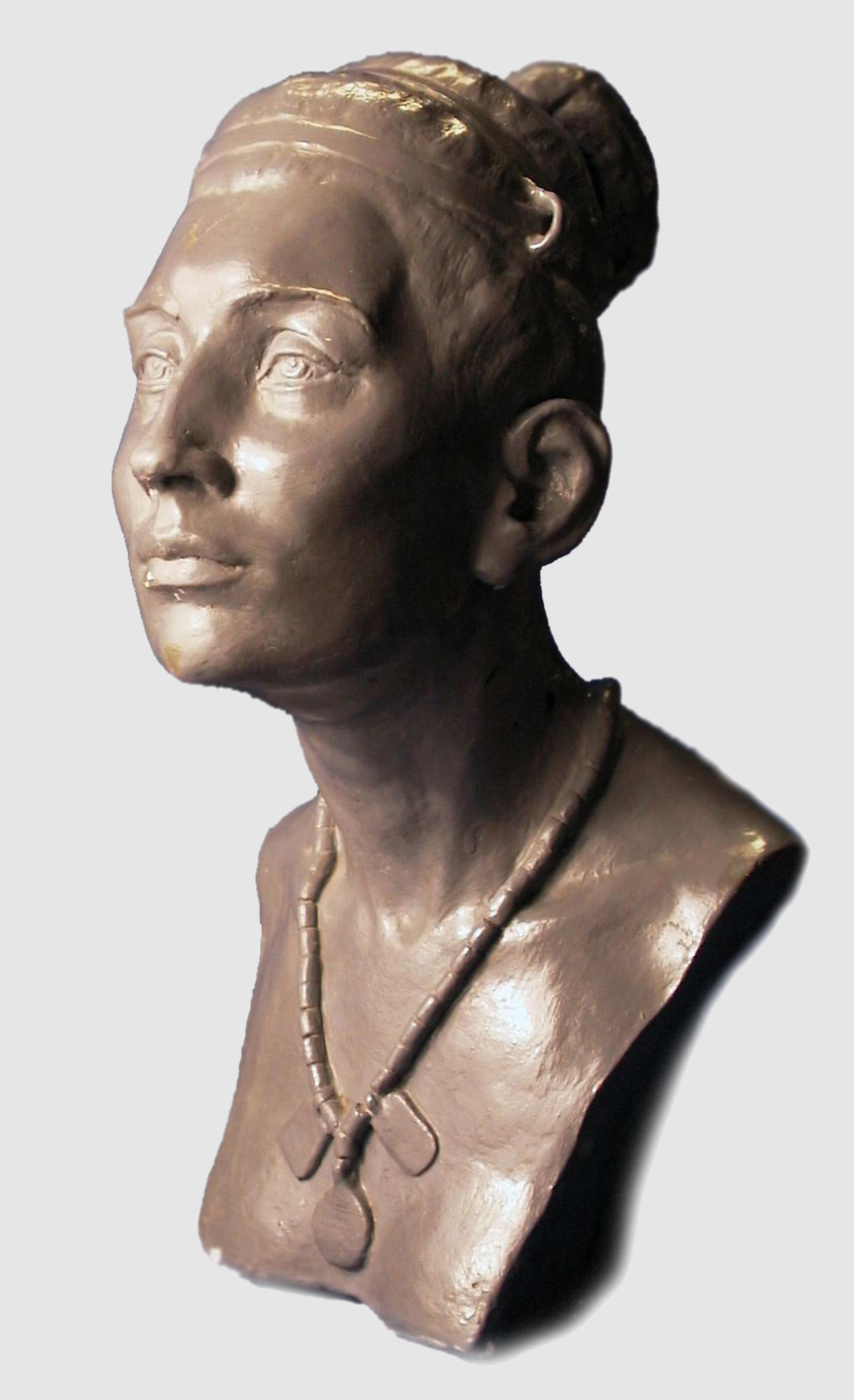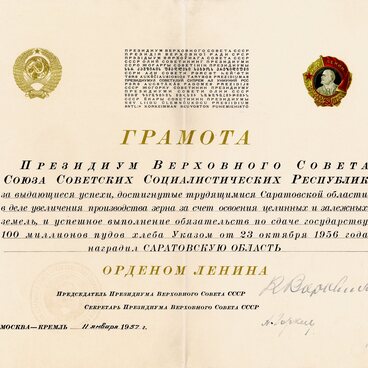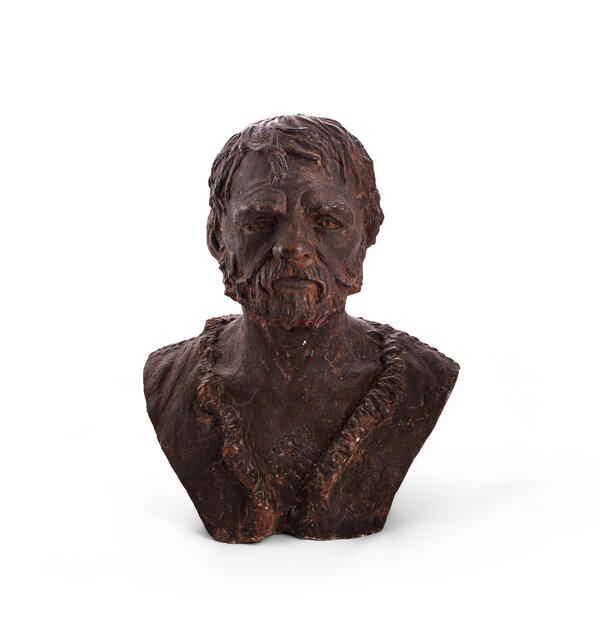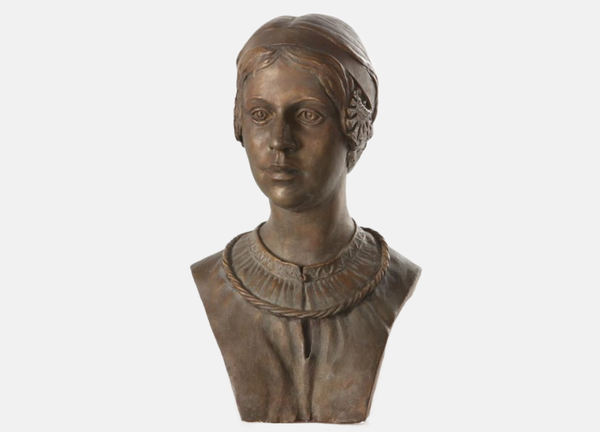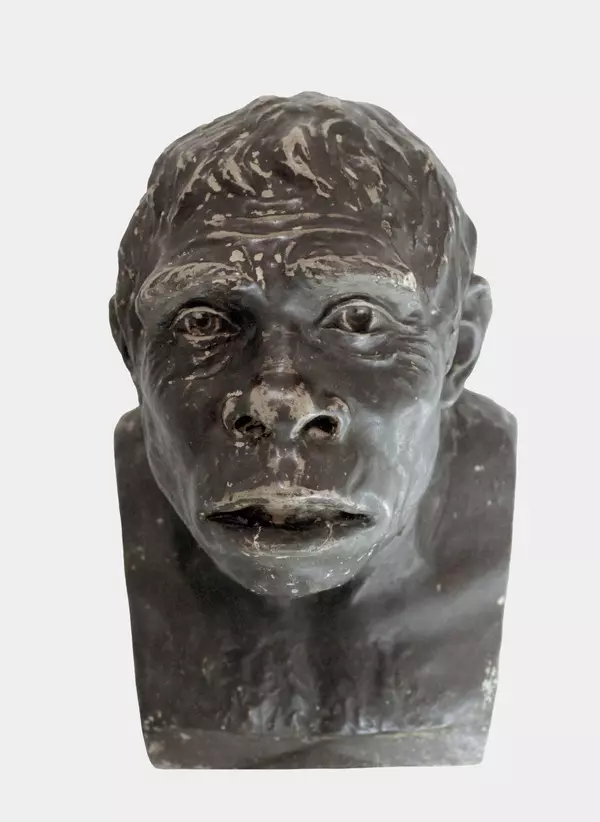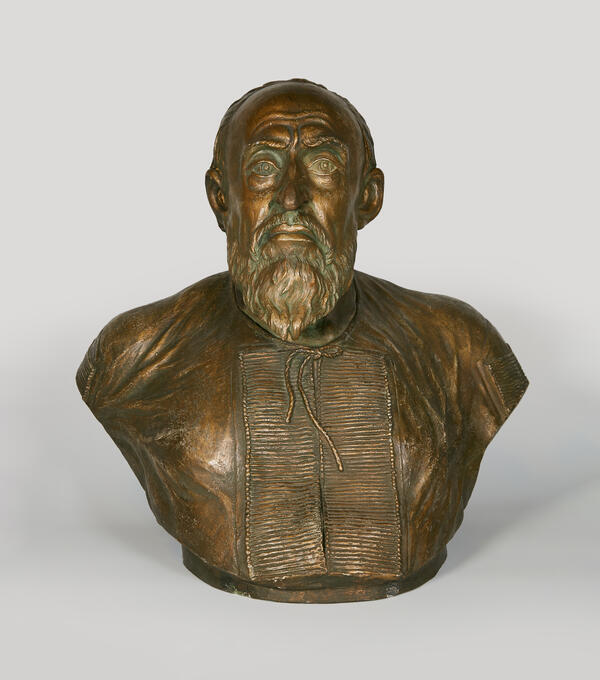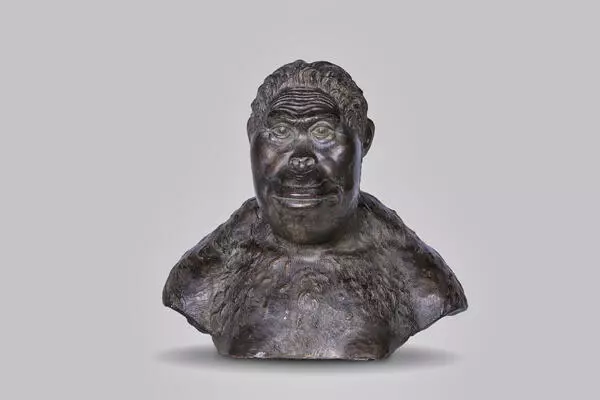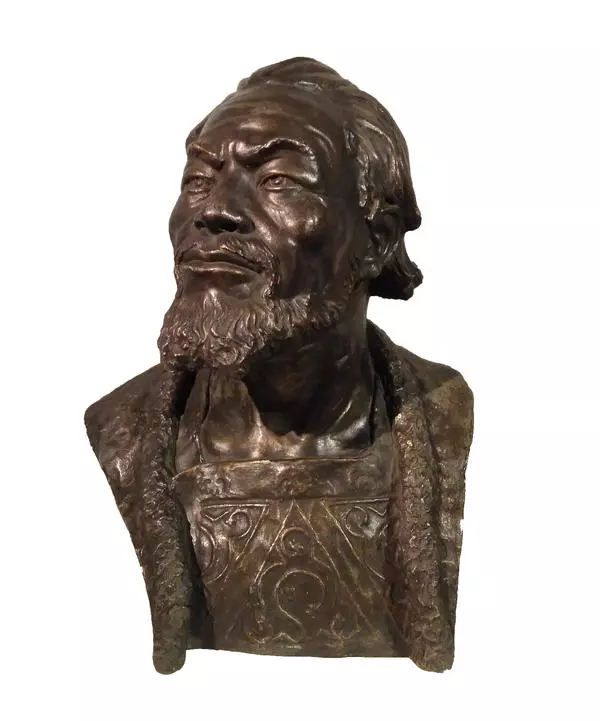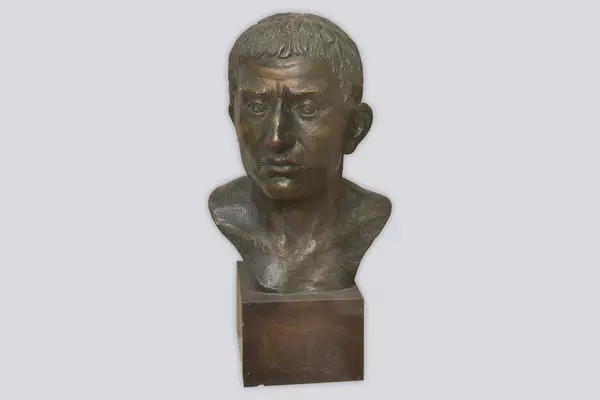The exhibition of rare objects at the Saratov Local History Museum showcases a sculptural reconstruction of a woman’s head from the Catacomb culture. It was made by the world famous anthropologist, archaeologist, and sculptor Mikhail Gerasimov. He developed a technique for restoring the human appearance using skeletal remains - the so-called ‘Gerasimov method’. For many years, the scientist studied the patterns governing the ratio of soft skin and bones in and on the skull, and recreated the appearance of historical figures like Yaroslav the Wise, Andrey Bogolyubskiy, and Tamerlane. After studying the skull from the Berezhnovskiy burial mound, the scientist reconstructed the appearance of a woman with her head extended upward. To visually highlight the deformation of the skull, her hair was gathered in a bun at the back of her head. This kind of hairstyle was probably supported by leather straps, with temple rings made of thin, curved bronze wire. A necklace is depicted on the woman’s neck in the form of small copper beads, and large bone pendants, strung on a thin strap.
The burial site near the village of Berezhnovka was investigated in 1952 while excavating a burial mound in the Trans-Volga region on the Yeruslan River. The archaeological expedition was led by the Saratov scientist Ivan Vasilyevich Sinitsyn. In one of the burial mounds, the burial site was discovered for a woman from the Catacomb culture who lived about five thousand years ago. A skull with pronounced deformation not from natural causes attracted the attention of the archaeologists. Scientists suggested that the child’s head had been tightly bandaged starting in infancy, which stretched out the skull. The elongated shape of the skull probably indicated that she belonged to a noble family. At different times, this phenomenon was typical across many peoples.
The tribes of the Catacomb culture lived in the area of modern-day Saratov at the end of the third millennium B.C. These tribes got their name from the type of burial they practiced: in one of the walls of the grave pit, they arranged a catacomb in which the deceased was buried. The tribes of the Catacomb culture were involved in cattle breeding and agriculture, could make products from copper and bronze, and traded with their neighbors, in particular, with the tribes in the Caucasus - and through them with western Asia, Iran, and Egypt.
The burial site near the village of Berezhnovka was investigated in 1952 while excavating a burial mound in the Trans-Volga region on the Yeruslan River. The archaeological expedition was led by the Saratov scientist Ivan Vasilyevich Sinitsyn. In one of the burial mounds, the burial site was discovered for a woman from the Catacomb culture who lived about five thousand years ago. A skull with pronounced deformation not from natural causes attracted the attention of the archaeologists. Scientists suggested that the child’s head had been tightly bandaged starting in infancy, which stretched out the skull. The elongated shape of the skull probably indicated that she belonged to a noble family. At different times, this phenomenon was typical across many peoples.
The tribes of the Catacomb culture lived in the area of modern-day Saratov at the end of the third millennium B.C. These tribes got their name from the type of burial they practiced: in one of the walls of the grave pit, they arranged a catacomb in which the deceased was buried. The tribes of the Catacomb culture were involved in cattle breeding and agriculture, could make products from copper and bronze, and traded with their neighbors, in particular, with the tribes in the Caucasus - and through them with western Asia, Iran, and Egypt.
